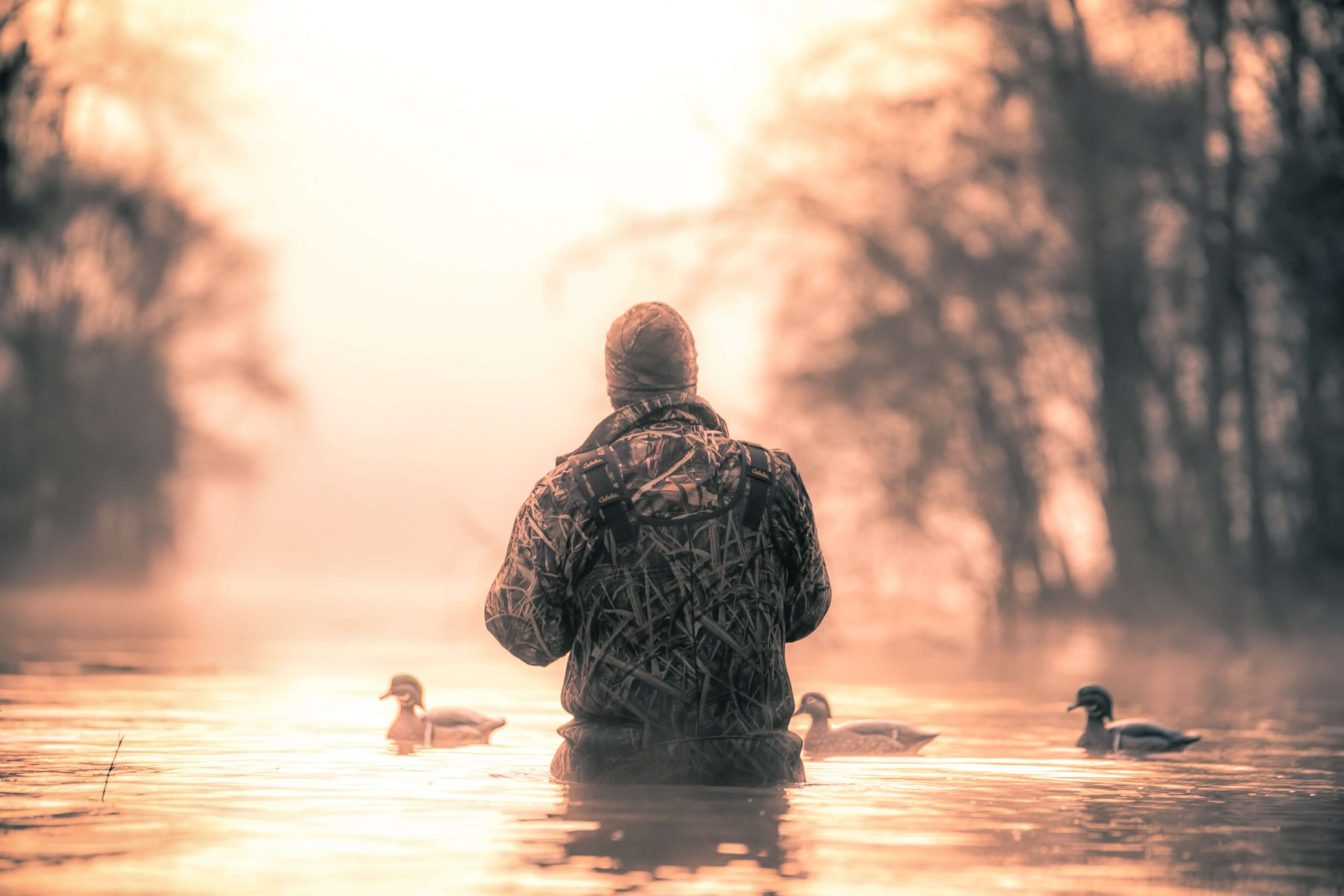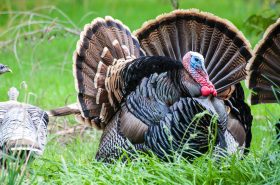
Setting up a good decoy spread can go a long way to helping you have a successful waterfowl hunt, but much more goes into it than simply tossing out a bunch of decoys and hoping the ducks come in. There are numerous factors you will want to consider when setting up your decoys to give you the best shot at a successful hunt. A poor decoy spread will significantly hinder your success, especially later in the season when the birds are more wary and will be hesitant to land if something looks amiss.
One of the most important factors to consider when setting up your decoy presentation will be the wind. You will want to consider not only what direction the wind is moving, but also how strong these winds are. Waterfowl will almost always land into the wind, as they use it to slow themselves down in preparation to land. You’ll want to get a good gauge of the predominant wind direction, if there is one, and set your decoys up from here. You’ll want to set your decoys up in a manner that will draw the attention of ducks in the air and pull them down to land. You also want to do your best to get the ducks to come into your desired shooting range, leaving an open landing zone in this area with your decoys around the perimeter will help to get them in. Spreading the decoys in a cup or C pattern, or a J pattern are some popular setups to create this scenario. These patterns will function in similar capacities, with some feeder ducks in closer to the bank and then another grouping starting on the upwind side of this and arcing out and back downwind. The idea here is that ducks dropping down to your spread will come into the gap between the close and far decoys, and try to touch down before the decoys cutting across the upwind side. This will put them in prime shooting position for you. Many hunters prefer to use the J pattern when there are high winds. These patterns are typical for hunters in open water areas such as large rivers and lakes.
Another thing to consider is the size of your spread. Many people believe bigger is better, and there are certainly advantages to this. Larger spreads will be more visible to flying birds and draw their attention from greater distances. Larger spreads can also be appealing to smaller grouper, pairs, or individual birds passing over. The downside to large spreads is that they do take some commitment and time to set up. Also, if you are in a smaller cove, you don’t want to clutter the space with decoys as this could deter some birds, especially some larger groups from touching down. When positioning your blind, or the decoys around your blind, you’ll typically want to be sitting on the short side of the J hook or a little ways, maybe 20-30 yards or so, from the end of the cup. This should put you in great positioning for when the ducks are low and at the slowest part of their descent.
These patterns are often less useful when hunting more closed-in areas such as swamps, as space is often more confined and ducks tend to pattern differently in these areas. If you can scout an area prior to heading out it will often give you the best idea of how the ducks behave in that area. Often in marshy areas, ducks will land in the more open spaces then swim around the edges and through channels in order to feed. Incorporating some decoys around the reeds and along the edges can help make your presentation more realistic. These are also areas where bigger isn’t always better as too many decoys can easily fill the space up and limit the space that the birds have to land. Here, try putting out a grouping of ducks along the edges of the hole, with a decoy or two in between groups. Often you will want to set more decoys on the upwind side of the hole with a few on the downwind side. Again, this will encourage any birds coming down to hit the open hole before the decoys and into your prime shooting range. These marshy areas are also more protected from the winds, so although there may be winds above the marsh influencing the directions the birds will land, there may not be much surface movement. This isn’t necessarily a good thing as a little decoy movement is preferred to help make it look more realistic and with no wind, your decoys will be sitting unnaturally still. In scenarios like this, using decoys set up on a pull cord or automated decoys can help add that movement to make your presentation more realistic.
There are many more nuances to consider when duck hunting and small tips and tricks you will pick up along the way, but this info will help you get a good start on the water and hopeful land some ducks. We’re going to end off here discussing some common issues you may encounter with your spread.
The first issue is having your spread to set up too close to the shorelines or blind you are in. An indicator of this is if the ducks are landing out past your spread and out of shooting range. If this is the case, move the spread out a little further to give the ducks more space in the inside of the spread, and closer to you to land. You can also have the opposite problem where ducks land short of your spread. This is more commonly a wind direction issue than a decoy structure issue. If possible, you can try simply moving downwind a little further to setup where the ducks are landing. If your positioning is fixed, then you’ll want to move the decoys upwind the same amount of distance that the ducks are landing short to put them right in your wheelhouse. Finally, and most frustratingly, is when the ducks are coming in and then suddenly flare off to the side, or stay high and pass over. This typically means something has spooked the ducks off from your positioning. This can often mean that they saw you, your buddies, or your dog and have become wise to your decoys.
If you’re confident in your positioning and that they didn’t see you, it likely means there’s an issue with your decoy setup. One of the most common issues is that an aspect of your setup looks unnatural. This is often from having your decoys in too large of a group. It could also mean that there wasn’t a well enough defined landing area for them to come down in. Analyze your setup to see if you need to remove some decoys from your setup, or perhaps simply shift the setup to create more space to land. Either way, try to make a well-defined landing patch for them to come down in.
It is important to pay attention and make notes of how the ducks are responding to your decoys and adjust accordingly. If you have ducks come in but they don’t come into the decoys as you planned, chances are other ducks are going to do the same thing, so if you don’t adjust you’ll likely be in for a tough day.







